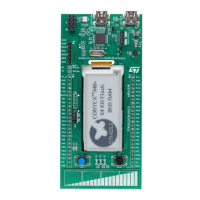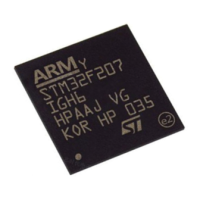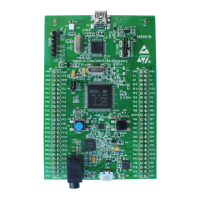PM0215 The STM32 Cortex-M0 instruction set
Doc ID 022979 Rev 1 39/91
3.3.4 Address alignment
An aligned access is an operation where a word-aligned address is used for a word, or
multiple word access, or where a halfword-aligned address is used for a halfword access.
Byte accesses are always aligned.
There is no support for unaligned accesses on the Cortex-M0 processor. Any attempt to
perform an unaligned memory access operation results in a HardFault exception.
3.3.5 PC-relative expressions
A PC-relative expression or label is a symbol that represents the address of an instruction or
literal data. It is represented in the instruction as the PC value plus or minus a numeric
offset. The assembler calculates the required offset from the label and the address of the
current instruction. If the offset is too big, the assembler produces an error.
● For most instructions, the value of the PC is the address of the current instruction plus
four bytes.
● Your assembler might permit other syntaxes for PC-relative expressions, such as a
label plus or minus a number, or an expression of the form
[PC, #number]
.
3.3.6 Conditional execution
Most data processing instructions can optionally update the condition flags in the application
program status register (APSR) according to the result of the operation (see Application
program status register on page 14). Some instructions update all flags, and some only
update a subset. If a flag is not updated, the original value is preserved. See the instruction
descriptions for the flags they affect.
You can execute an instruction conditionally, based on the condition flags set in another
instruction:
● Immediately after the instruction that updated the flags
● After any number of intervening instructions that have not updated the flags
On the Cortex-M0 processor, conditional execution is available by using conditional
branches.
This section describes:
● The condition flags
● Condition code suffixes
The condition flags
The APSR contains the following condition flags:
● N: Set to 1 when the result of the operation is negative, otherwise cleared to 0
● Z: Set to 1 when the result of the operation is zero, otherwise cleared to 0
● C: Set to 1 when the operation results in a carry, otherwise cleared to 0.
● V: Set to 1 when the operation causes an overflow, otherwise cleared to 0.
For more information about the APSR see Program status register on page 13.

